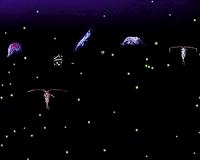| . |  |
. |
Beijing (UPI) Feb 24, 2011 Scientists say an ancient fossil found in China dubbed the "walking cactus" is not a plant but the first creature to walk on bendable, jointed legs. Dating back about 520 million years, the fossilized thumb-sized, worm-like animal has been named Diania cactiformus in honor of its spiky look, ScienceDaily.com reported Thursday. Jianni Liu of Northwest University in Xi'an, China, says the creature probably scurried along the bottom of shallow seas. Its 10 pairs of long, sturdy legs surprised Liu when she first saw it, she says. "I fell in love with this strange guy," she says. "Later when I observed it carefully under the microscope, I realized it was not only a funny one but an important one." Its 10 legs appear to have carried a hard, outer covering of armor and joints that let them bend, features that would make the species the earliest known to have a hardened outer covering and also the first to have jointed legs, Liu says. Today those features distinguish the arthropods, including crustaceans, insects and spiders. "The significance of the find is that arthropods are, in terms of species, the most successful group on the planet," Liu says. "The secret of their success seems to be their legs."
Share This Article With Planet Earth
Related Links Explore The Early Earth at TerraDaily.com
 Plankton Key To Origin Of Earth's First Breathable Atmosphere
Plankton Key To Origin Of Earth's First Breathable AtmosphereColumbus OH (SPX) Feb 23, 2011 Researchers studying the origin of Earth's first breathable atmosphere have zeroed in on the major role played by some very unassuming creatures: plankton. In a paper to appear in the online Early Edition of the Proceedings of the National Academy of Sciences (PNAS), Ohio State University researcher Matthew Saltzman and his colleagues show how plankton provided a critical link between the ... read more |
|
| The content herein, unless otherwise known to be public domain, are Copyright 1995-2010 - SpaceDaily. AFP and UPI Wire Stories are copyright Agence France-Presse and United Press International. ESA Portal Reports are copyright European Space Agency. All NASA sourced material is public domain. Additional copyrights may apply in whole or part to other bona fide parties. Advertising does not imply endorsement,agreement or approval of any opinions, statements or information provided by SpaceDaily on any Web page published or hosted by SpaceDaily. Privacy Statement |